For many of us, protein is currently a hot topic, especially for those who are actively pursuing fitness goals and engaging in sports. But what happens when you decide to switch to a raw food diet? Can we truly get enough protein with aw food and optimally supply our bodies with all the essential amino acids?
In this article, we delve into the question of whether a raw food diet can adequately meet our protein requirements. We’ll take a closer look at protein metabolism and the key mechanisms that occur in our bodies. Join us as we explore the fascinating world of raw foods and discover whether they can also meet your protein needs.
CONTENT
- Proteins: An Introduction to Their Structure
- What Are the Functions of Proteins?
- How Does Protein Metabolism Work?
- Cell Recycling through Intermittent Fasting
- Building the Body’s Own Proteins
- Protein Needs: How Much Protein Do Our Bodies Require?
- Connection: Demand and Metabolism
- Sources of Protein in the Raw Vegan Diet
Proteins: An Introduction to Their Structure
Along with fats and carbohydrates, proteins are one of the three main nutrients, also called macronutrients, in our diet.
Proteins are complex molecular compounds composed of individual amino acids. Today, 100 different amino acids are known, 20 of which are found in the human body.
The individual amino acids consist of a carboxyl group (COOH) and an amino group (NH). Both groups are linked to each other through a carbon atom. Additionally, a hydrogen atom and a residual group are attached to the carbon atom, which determines the type of amino acid. Amino acids combine with each other to form long chains; they’re considered peptides when combined with less than 100 amino acids, and proteins when combined with more than 100 amino acids.
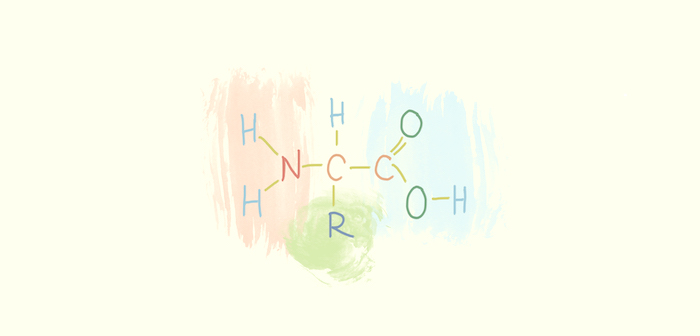
Dispensable and indispensable amino acids
Proteins are divided into what are called indispensable and dispensable amino acids (formerly known as: “essential” and “non-essential”).
While the human body can produce the 10 dispensable ones by itself, we have to take in the 8 indispensable ones through food. There are two exceptions to this rule: These are called the conditionally-essential amino acids. They only need to be provided externally under certain conditions, for example, in the case of illness, growth, or increased physical activity, should these circumstances lead to an increased need.
The indispensable amino acids:
- Isoleucine
- Leucine
- Lysine
- Methionine
- Phenylalanine
- Thereonin
- Tryptophan
- Valine
The dispensable amino acid:
- Alanine
- Arginine
- Asparagin
- Aspartic acid
- Cysteine
- Glutamine
- Glutamic acid
- Glycine
- Proline
- Serine
The conditionally-essential:
- Tyrosine
- Histidine
Proteins are complex molecular compounds composed of individual amino acids. Some of them can be produced by the body itself – they’re called dispensable amino acids. Others – the indispensable ones – need to be ingested through food.
What Are the Functions of Proteins?
Unlike carbohydrates and fats, proteins aren’t intended primarily for energy production. Their main function results from their capacity as building material. In addition to this, the complex compounds also perform many other tasks.
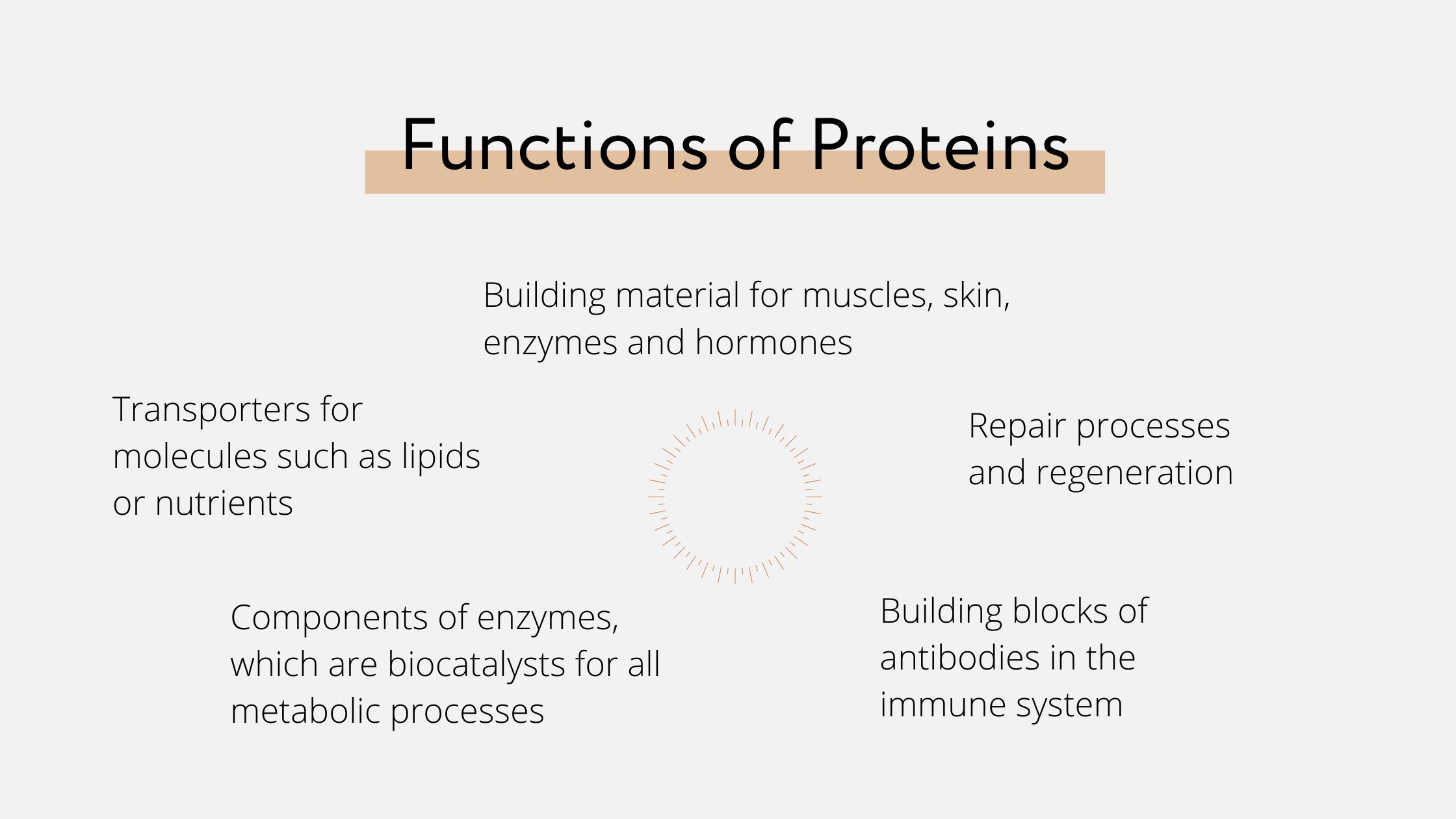
Building material of the body
Proteins serve as building blocks for the cell membrane that surrounds each individual body cell. Muscles, tendons, ligaments, connective and nervous tissue, organs, skin, and hair are also all held together by proteins. To give an example, the fibrous protein collagen, which is in our tendons and ligaments, gives the body its strength.
Immune system and metabolism
Without its most important building blocks, the immune system would not be able to defend us against invading pathogens. Proteins make up the antibodies that fight viruses, bacteria, and other harmful microorganisms.
Enzymes, which control all metabolic processes in the body, are also made of proteins; so are hormones like insulin, which is in charge of transporting glucose into cells for energy production.
Repair processes and regeneration
Body tissue is constantly getting damaged. Muscle training, for example, causes tiny micro-injuries in the muscles. But specific proteins repair them, and the muscle regenerates and actually becomes stronger. Even with an external injury, like a cut, it’s proteins that heal the tissue. The same applies to damaged nerve cells in the brain.
Proteins as transporters
Another function of proteins: they act as transporters. Special proteins transport various substances through the blood plasma to their destinations. The red blood pigment hemoglobin, for example, transports oxygen to the cells. The protein transferrin, on the other hand, is responsible for transporting iron, albumin for certain hormones, salts, and vitamin C.
Whether muscles, skin, enzymes, hormones, or antibodies – a large part of the human body consists of proteins. In addition to their function as building blocks, they repair cells, act as transporters, and complete other vital tasks.
Are you interested in gaining a comprehensive understanding of the health benefits of a plant-based diet? Download the curriculum for our Holistic Nutrition Coach training program.
How Does Protein Metabolism Work?
Proteins ingested with food can only be utilized by the human body by being digested and then broken down into individual amino acids. The first step in protein digestion takes place in the acidic environment of the stomach by the enzyme pepsin. In the small intestine, this process continues through the action of the pancreatic and small intestinal enzymes, and proteins are gradually broken down into low-molecular-weight peptides, and finally into three-chain, two-chain, or individual amino acids.
At this stage, the individual amino acids and also a small amount of di- and tripeptides are absorbed into the bloodstream through the intestinal mucosa, and transported to the liver through the portal vein.
Note:
Additionally, amino acids produced by the breakdown of the body’s own tissue are also absorbed and “recycled”, so to speak.
👉 It’s hard to believe, but this process actually provides almost half of the amino acids available daily!
The more efficiently our metabolism works, the better this process works – and we can support this through intermittent fasting. Fasting activates the autophagy process, which breaks down old cells and recycles their components, including amino acids.
Cell Recycling through Intermittent Fasting
In 2016, cell biologist Yoshinori Ohsumi was awarded the Nobel Prize for the effect of autophagy after decades of research – a discovery that allows us to ask completely new questions:
From this point of view, isn’t it obvious that our body can recover all the amino acids depending on its metabolic activity? For autophagy researcher Frank Madeo as well, the claim that all vital nutrients have to be taken in with the diet is no longer up-to-date.
Autophagy
Autophagy is a natural process of cell regeneration in which dead cellular material, and damaged or even degenerated cellular structures are broken down into their smallest building blocks and eventually reused by means of metabolism.
The cell recycling process is triggered in particular by longer phases without food (see also article on intermittent fasting). This is because the body then has enough time to fully digest, regenerate, and cleanse itself.
The body doesn’t have this opportunity if it’s constantly busy with digestive activities. After about 12 hours without food, when there’s no more circulation of insulin, a hormone that holds off autophagy, then the body begins to utilize used and dead cells, waste products of inflammation, and other deposited substances.
In this process, discarded proteins are broken down into their individual amino acids and recovered. This means that by taking breaks from eating for more than 12 hours, we can significantly support our body in its cleansing, detoxification, and amino acid recovery.
Another tip: Regular exercise also supports the body’s recycling process – studies have proven this (2).
Building the Body’s Own Proteins
In a further step, proteins are produced from the individual amino acids in the cells of our body. The blueprint for these body’s own proteins is present in the cell nucleus as deoxyribonucleic acid (DNA). The DNA contains the instructions for how amino acids are assembled into specific proteins.
Although protein synthesis takes place in all cells, the majority of enzyme and hormone production takes place in the liver. The implementation of this blueprint, i.e. the assembly of the amino acids into proteins, is carried out by the ribosomes in the endoplasmic reticulum of the cells. Depending on the cell type, different proteins are created, such as plasma proteins, coagulation factors or transport proteins.
Amino acid pool: The short-term store
Every cell depends on the presence of amino acids for protein synthesis. If necessary, the cells can use the so-called amino acid pool – this represents the entirety of freely available amino acids that are present in the body both intracellularly and extracellularly. The pool comprises about 100 to 120 g of amino acids, and is used for “interim storage.”
Muscles: The long-term storag
While fats are stored in fat cells and carbohydrates in the liver, our muscles serve as the largest long-term storage for proteins. If the amino acid pool is depleted and proteins are lacking in places where they’re more urgently needed – like in the immune system, for example – the body can help itself from the muscles in case of emergency.
However, since we want to maintain our muscles as much as possible, and since the amino acid pool gets emptied more quickly than our fat and carbohydrate stores, we need to replenish it daily and especially keep an eye on our supply of indispensable amino acids.
Energy production from proteins
As already mentioned, proteins are not used primarily for energy production. Only when the body doesn’t get enough energy in the form of carbohydrates and fats, and at the same time has more protein than it needs, can it convert this into energy. To do this, it must be converted or broken down.
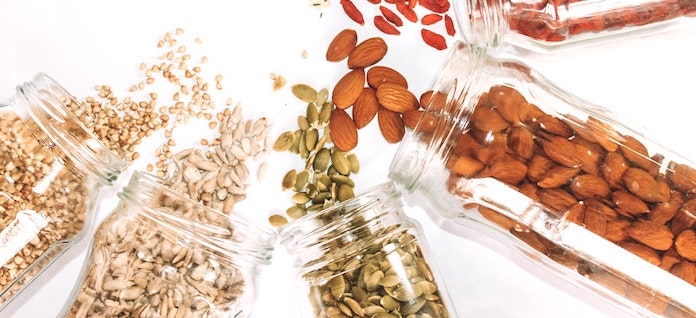
Protein Needs: How Much Protein Do Our Bodies Require?
This question is discussed a lot and is quite controversial. There are various recommendations for the daily requirement, which are all supported by different explanations and studies.
Recommendation: German Nutrition Society
The German Nutrition Society (GNS), for example, recommends an amount of 0.8 grams of protein per kilogram of body weight per day. For someone who weighs 75 kilograms (165 lbs), that would be 60 grams of protein a day.
For athletes who train more than 5 hours per week, a protein intake of 1.2 – 2.0 grams per kilogram of body weight is recommended, depending on the conditions and goals of the training. For our article on raw vegan nutrition for athletes, see here: “Raw-Vegan Sports Nutrition – These Are the Advantages.”
Protein storage disease according to Dr. Lothar Wendt
Dr. Wendt has researched protein metabolism in the human body and came to the conclusion that – contrary to conventional scientific opinion – a diet that’s very rich in protein can lead to deposits forming in the connective tissue and at the basal membrane of the fine capillaries. This leads to restrictions in the transport of oxygen and nutrients to the cells, as well as the removal of harmful substances from the cells. It further leads to physical problems like high blood pressure, gout, rheumatism, diabetes, and many more.
Results of the “China Study”
One of the best-known studies on the intake of animal protein was conducted by Prof. Colin Campbell, professor of biochemistry and formerly an enthusiastic supporter of the traditional meat-and-dairy-rich diet in the USA. He led what was called the China-Cornell-Oxford Project in the 1970’s and ‘80’s, which collected data from 6500 people from 24 provinces in China.
His findings showed links between the consumption of animal protein and many different lifestyle diseases, causing Campbell to fundamentally change his mind and eventually advocate a vegan diet. He recommends reducing or completely avoiding the consumption of animal protein.
Cell recycling and autophagy
In addition to discussing protein requirements, it is important to look at the process of autophagy. This plays a crucial role in the recovery and recycling of dead or damaged cell material that is rich in protein.
👉 See also our blog article
The hidden dangers of a high-protein diet
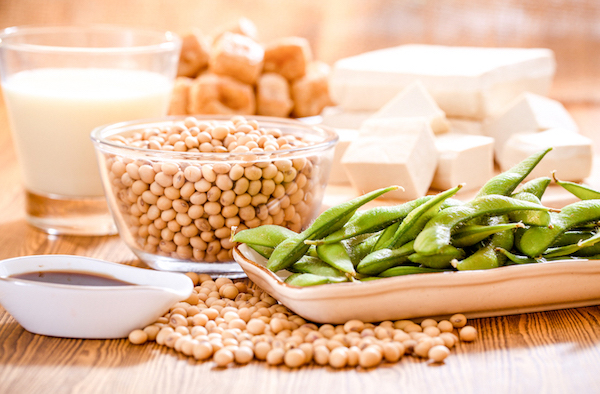
Connection: Demand and Metabolism
Let’s now connect the requirement to the knowledge we’ve learned about protein metabolism and autophagy. As we’ve already described, the body can produce the dispensable amino acids by itself, while it needs to take in the indispensable ones with the food.
This means that the intake of the essential amino acids is more important than the total amount of protein consumed. What’s more, the individual need depends on the activity of autophagy. Depending on how effectively this recycling program works, the body is able to produce more proteins itself.
To summarize, this means that the total protein requirement is individual and depends on specific metabolic activity, as well as the composition of the proteins from dispensable and indispensable amino acids. Whether the ingested proteins “harm” the body beyond a certain level also depends largely on the performance of the kidneys, i.e. the ability to excrete urea, the mineral balance and the general state of health.
Protein Sources in the Raw Vegan Diet
In the world of plants we find all kinds of valuable sources of protein. Basically, there’s no plant food that’s free of protein.
Limiting Factor
The German Nutrition Society (GNS) actually classifies protein in the vegan diet as one of the potentially critical nutrients, since plant foods contain on average a lower amount of protein and a less-than-ideal amino acid profile. This means that a lot of plants don’t always contain all amino acids in sufficient amounts, or are low in one essential amino acid, which is referred to as a “limiting amino acid.”
In particular, the amino acids methionine and lysine are classified as limiting because they’re typically found in lower amounts compared to the other essential amino acids in plant foods.
The Solution
Variety and Clever Combinations:
- Hemp seeds, buckwheat, quinoa, nettle, and oats, as well as chlorella and spirulina, have a fairly balanced amino acid profile. Soy products are subject to a very intensive processing procedure and should only be used in raw vegan cuisine in fermented form.
- Nuts and seeds tend to be low in lysine and methionine.
- Legumes are considered rich in lysine.
Soaking and Sprouting
For better protein availability, seeds and nuts as well as legumes and (pseudo)grains can be soaked and allowed to germinate before eating them. This reduces substances that prevent absorption, like phytic acids and lectins, and also improves the absorption of other nutrients like iron and zinc.
The following is an overview of protein-rich plant foods in raw food cuisine:
- Activated nuts, including walnuts, almonds, hazelnuts, Brazil nuts, cashews, etc.
- Germinated seeds, including hemp seeds, sunflower seeds, pumpkin seeds, buckwheat, etc.
- Quinoa, millet, germinated legumes, e.g. chickpeas, lentils, kidney beans, etc.
- Avocados
- Sprouts
- Algae, e.g. spirulina, chlorella, nori, kelp, dulse
- Wild herbs and leafy vegetables
- Fermented soy products like tempeh
Along with activated nuts, sprouted seeds, and sprouts, nettle is one of the most valuable sources of protein in raw vegan cooking. Basically, it’s very exciting: every plant food contains protein.
Would you like to join our unique program, based on nutritional sciences and practice-oriented training for gaining a high level of health?
We’re more than happy to inform you about all that our training program offers on our website!

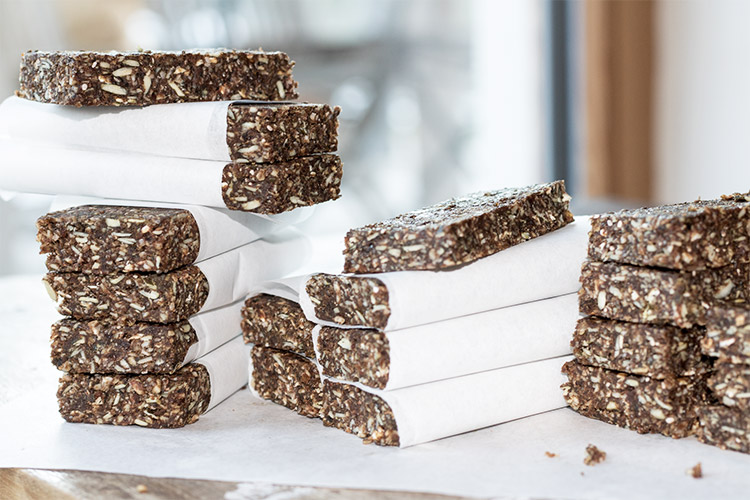




0 Comments